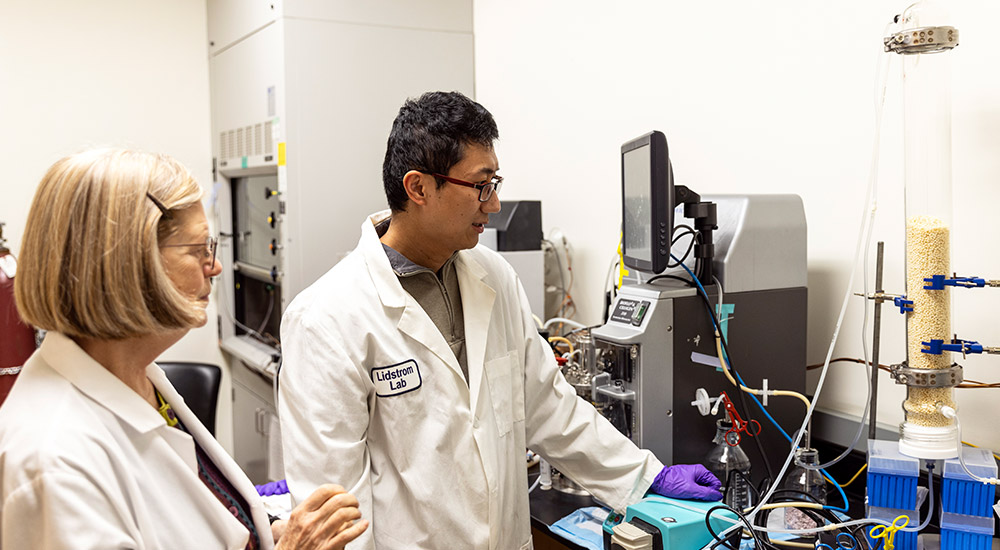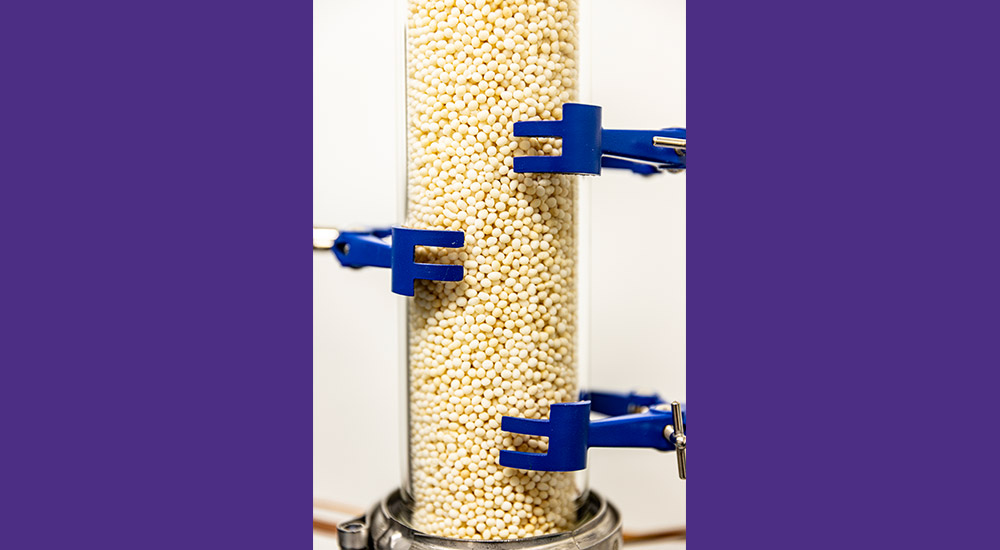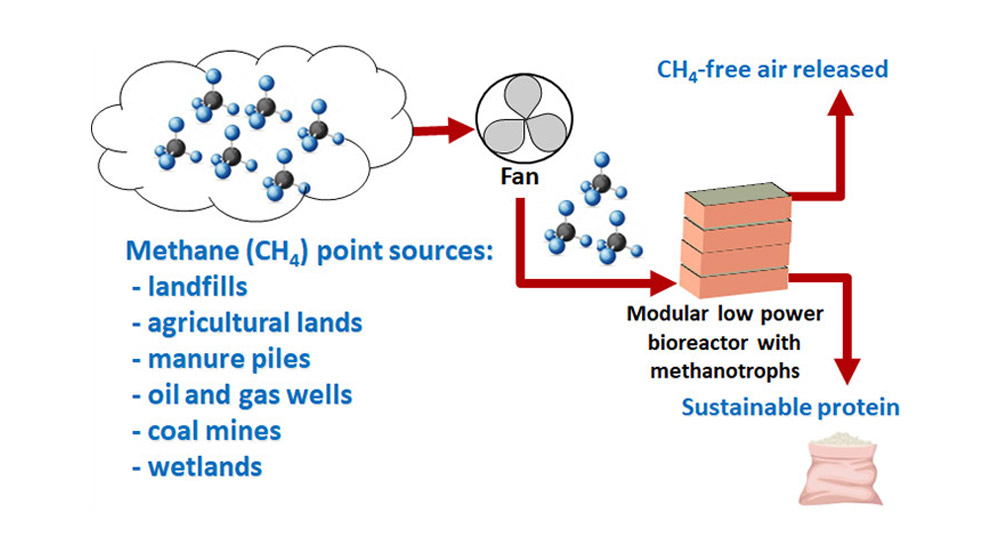By Brooke Fisher
Photos: Dennis Wise/University of Washington
Former UW Vice Provost for Research Mary Lidstrom returns to her lab, ready to reduce methane emissions.
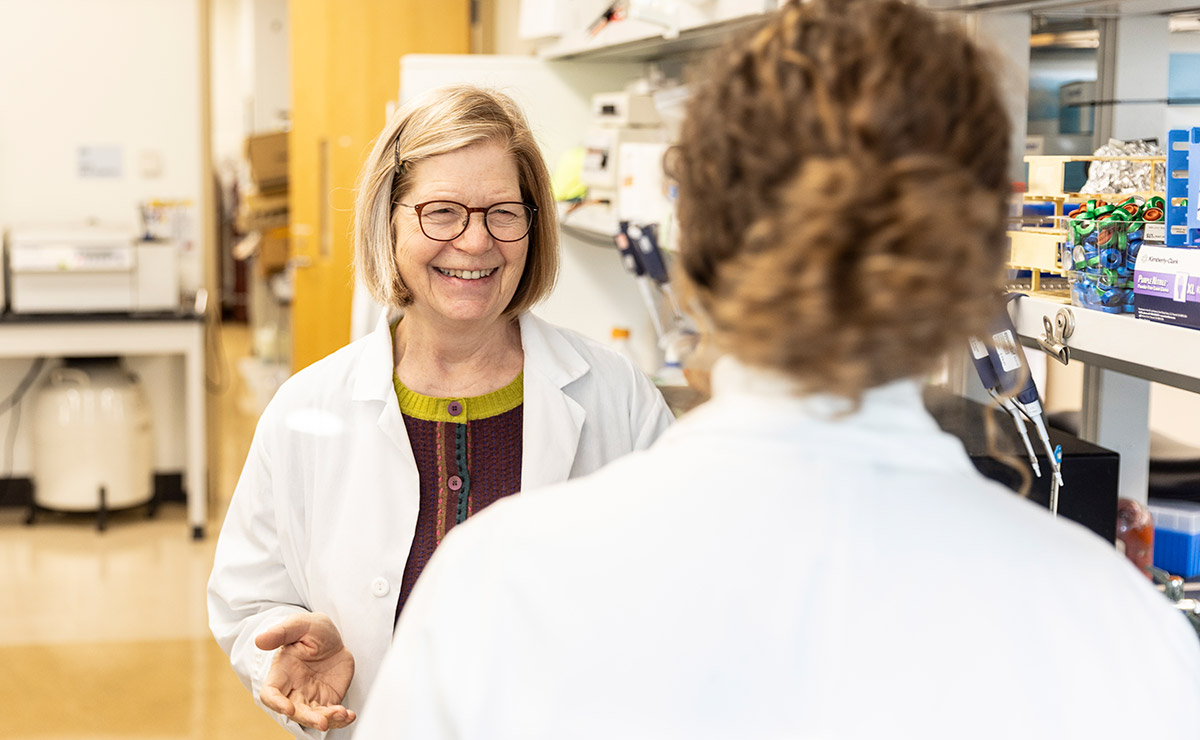
Professor Emeritus Mary Lidstrom discusses the research with undergraduate Mia Grayson.
For 16 years, Mary Lidstrom, Professor Emeritus of chemical engineering and microbiology, advocated for researchers across the University of Washington while serving as Vice Provost for Research. And now, she’s returned full-time to her own lab, eager to advocate for a promising project that aims to address climate change.
“The big impetus for me was so that I could focus 100% on this new research thrust,” says Lidstrom about stepping down from the leadership position in 2021 and also retiring from her departments shortly thereafter. “My whole career is coming together for this, that’s how I feel about it. And I have the luxury of time now.”
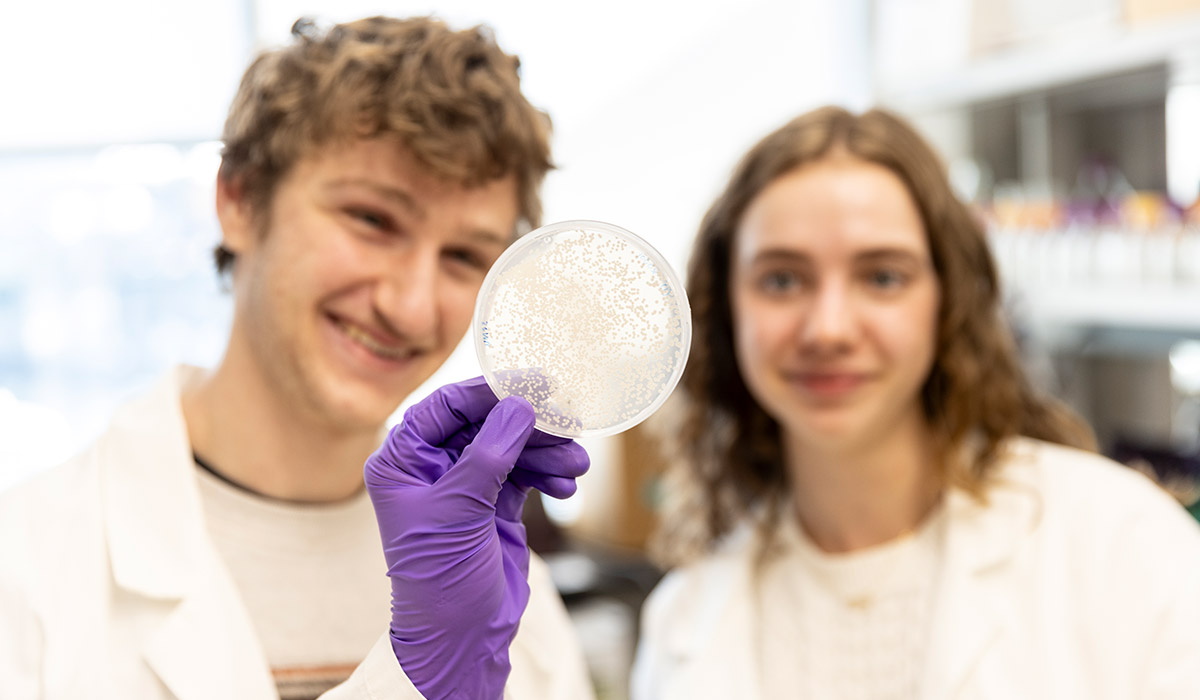
Undergraduates Owen Rosenbluth and Naomi Kern look at an agar plate containing bacteria.
While the project is breaking ground in many respects, and isn’t without challenges, Lidstrom is full of optimism for what her team aims to accomplish — reducing methane in the atmosphere on a global scale. To do so, she plans to utilize bacteria that can consume the greenhouse gas, which accounts for 30% of global warming emissions. Spearheading the effort, Lidstrom’s lab is joined by collaborators from the University of Utah, Northwestern University, Auburn University and Michigan Technological University. Funding comes from the National Science Foundation and the Carbon Technology Research Foundation.
“What this takes to make it successful is both microbiology and engineering. Since I can combine the two, and have 50 years of experience in this field, I felt that if I really wanted to do something about climate change, this was what I could do,” says Lidstrom, who celebrated her half-century research milestone this past fall.
A bacteria breakthrough
For nearly three years, Lidstrom’s lab has been working to address two primary challenges associated with harnessing bacteria for methane mitigation. The first of these was to find the right methane-eating bacteria, known as methanotrophs, for the job.
Fish food
A surprising byproduct that results from the bacteria converting methane to CO2 is a protein-rich biomass product. When bacteria consume methane, they produce more cells, similar to how humans grow by eating food. The cells can be dried and used to supplement feed for fish and livestock, for which there is an existing market.
“The bacteria use methane as their main source of food and have specialized metabolic pathways to do this that we’ve studied for decades. They are very unique in their capabilities,” Lidstrom explains. “So the idea is that we need bacteria that are really good at doing this, and we need an engineered system, a bioreactor, that can be deployed out in the field to remove methane.”
Turning to the extensive bacteria collection in her lab, Lidstrom started screening strains, some of which were isolated from Lake Washington, looking for an ideal candidate that could consume methane at low concentrations. While she’d assumed that the “workhorse” strain commonly used in her lab wouldn’t be suitable, that wasn’t the case.
“It really surprised me,” says Lidstrom about the pivotal finding, which is detailed in a PNAS paper published last summer. “I thought that because the strain grows well at high methane, it wouldn’t grow well at low. That wasn’t true — It is the champion.”
Compared to the majority of bacteria that are well-nourished when methane concentrations are around 5,000 parts per million (ppm), the strain that the researchers identified, Methylotuvimicrobium buryatense, can remove methane extremely well at concentrations as low as 200 ppm. Below 1,000 ppm is when most bacteria feel starved
“You can think about it in the same way that if people have a diet of 5,000 calories a day, it’s not a starvation problem. But if you try and cut back to 1,000 calories and below, they don’t do very well. It’s roughly in the same ballpark,” Lidstrom explains.
Optimizing the bacteria

Enlisting undergraduates
In the lab, three undergraduates work alongside Lidstrom and two senior scientists. The research topic is especially engaging for the students, says Lidstrom, who has a passion for mentorship.
“Climate change is the reason why I chose chemical engineering,” says Naomi Kern, a junior in chemical engineering. “Getting to apply my knowledge to help the environment is really fulfilling. I feel like I’m doing something to help.”
While the strain of bacteria that the researchers identified is capable of growing in low methane environments, it needs to consume methane more quickly for the process to be effective on a large scale. This is where the second big challenge comes in.
Surprisingly, even at higher output methane sites where the technology is anticipated to be located — such as landfills, agricultural lands, manure piles, oil and gas wells, coal mines and wetlands — the gas still supplies only a moderate level of nourishment to the bacteria.
“Around these sites that are leaking methane into the atmosphere, the methane is higher than in the air we breathe. It’s still hard for the bacteria, but they are ok, especially this really good strain we have,” Lidstrom says. “Whereas in the air we breathe, they can’t make a living off of it, it’s way too low.”
Since they’ll be sustained by a modest amount of food even at the elevated methane sites, the bacteria will operate at a slow pace. Therefore, the plan is to genetically modify the bacteria to enable them to work faster. In addition, to optimize their performance using minimal additives, undergraduate Naomi Kern, a junior in chemical engineering, is exploring ratios of electrolytes. For example, she is adjusting potassium and sodium levels to determine if it impacts the growth rate.
“I’m seeing if perhaps we can give them some energy savings, so they can spend more energy consuming methane,” Kern says.
Applying lessons from leadership
Big picture thinking and team building are skills that Lidstrom honed during her tenure as Vice Provost for Research. As a result of this strategic mindset, she’s already considering how to best commercialize the technology and conduct community outreach.
“Even if you develop this amazing technology and get it ready to go, people may not want it sitting in their community. It’s important to understand what people care about and to work with community leaders — you have to get engagement,” explains Lidstrom.
Preliminary designs depict the bioreactor, which would house the methane-consuming bacteria, as a shipping container-like structure. To slow global warming by 2050, Lidstrom’s goal is to deploy the technology by 2030, with scale-up projections showing it will take approximately 20 years to reduce methane emissions.
“We’ve made a lot of progress in the last three years. Getting to do deep dives into these areas to me is very exciting,” Lidstrom says. “I’ll be working on this until I can’t — it builds on my whole career.”
Climate action
Faculty, students and staff across the College of Engineering are working to address the climate crisis through research, teaching and collaboration.
Originally published January 29, 2024
